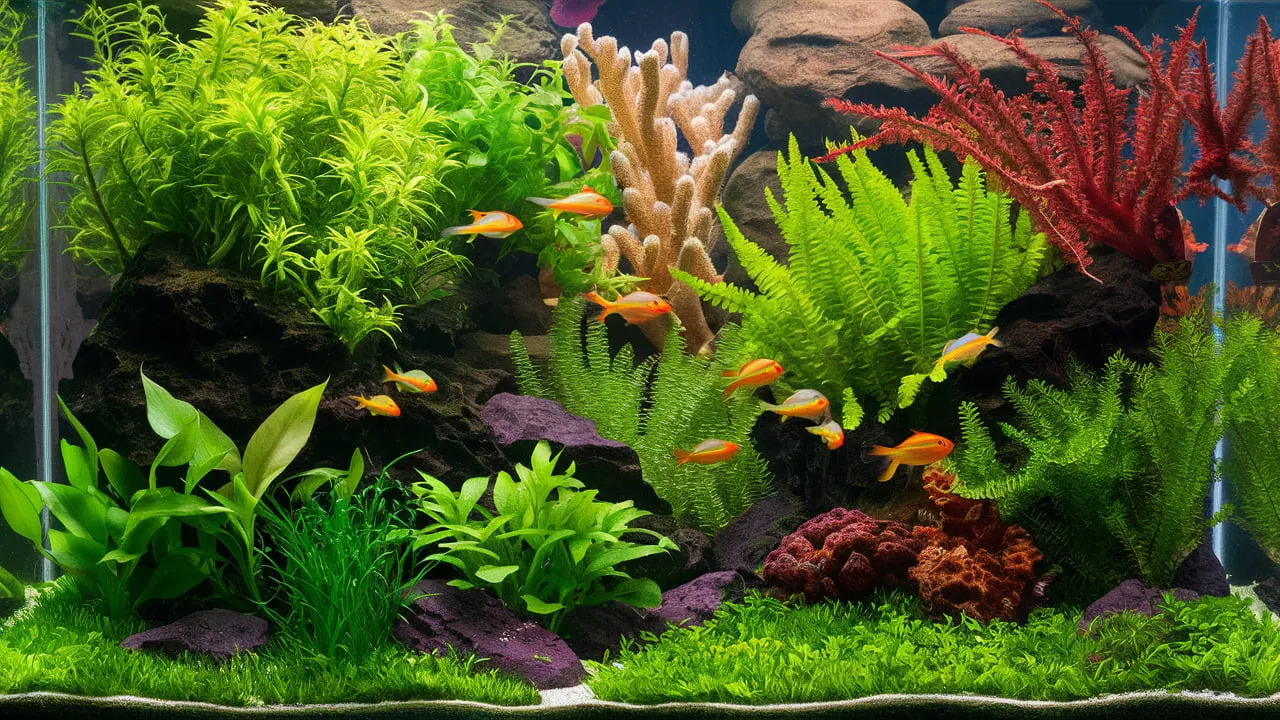Maintaining a thriving aquarium is a captivating hobby that allows us to bring a piece of the underwater world into our homes. One of the most integral components of a successful aquarium is the selection and care of aquarium plants. DIY (Do-It-Yourself) aquarium plants have gained immense popularity among aquarium enthusiasts, as they offer a cost-effective and customizable approach to enhancing the natural beauty of our aquatic environments.
In this comprehensive guide, we will explore the world of DIY aquarium plants, delving into the various techniques, benefits, and considerations for creating your own aquatic plant oasis. Whether you are a seasoned aquarist or a novice embarking on your first aquarium journey, this article will provide you with the knowledge and inspiration to cultivate a thriving underwater garden.
Understanding DIY Aquarium Plants

Aquarium plants play a crucial role in maintaining the delicate balance of an aquatic ecosystem. They not only add visual appeal but also serve essential functions, such as:
- Producing oxygen through photosynthesis
- Absorbing excess nutrients, helping to maintain water quality
- Providing hiding places and natural cover for fish and invertebrates
- Stabilizing substrate and preventing uprooting
- Enhancing the overall aesthetic appeal of the aquarium
Aquarium plants are the lush tapestry that transforms a water-filled space into a captivating underwater ecosystem. To create a visually appealing and biologically balanced aquarium, understanding plant classification is essential. Aquascapers often categorize plants based on their growth habits, dividing them into foreground, midground, and background varieties. Foreground plants, typically low-growing and dense, create a lush carpet at the base of the aquarium. Midground plants bridge the gap between the foreground and background, offering a transition in height and texture. Background plants, tall and often fast-growing, form the backdrop of the underwater landscape. By carefully selecting and arranging plants according to these categories, aquarists can construct stunning underwater vistas while providing the appropriate growing conditions for each plant species.
Selecting the Right Aquarium Plants
When choosing aquarium plants for your DIY projects, it’s important to consider factors such as:
- Plant growth rate and size
- Light requirements
- Nutrient and CO2 needs
- Compatibility with your aquarium’s inhabitants
- Ease of propagation and maintenance
By carefully selecting plants that suit your aquarium’s conditions, you can ensure a vibrant and low-maintenance underwater landscape.
DIY Aquarium Plant Propagation
One of the most rewarding aspects of DIY aquarium plants is the ability to propagate them and create new, thriving specimens. Aquarium plants can be propagated through various methods, such as:
- Stem cuttings
- Rhizome division
- Leaf or runner propagation
- Tissue culture
Propagation offers aquarists an exciting opportunity to expand their underwater gardens without breaking the bank. Whether you prefer the precision of cuttings, the patience of seed germination, or the adventurous realm of tissue culture, each method presents unique challenges and rewards. To achieve success, it’s essential to delve into the specific requirements of your chosen plants. Understanding factors such as light, temperature, humidity, and nutrient levels will significantly increase your chances of cultivating thriving new specimens. With careful attention to detail and a touch of horticultural expertise, you can unlock the potential of your aquatic plants and create a mesmerizing underwater world.
Rooting and Planting Aquarium Plants
Once you have propagated your aquarium plants, the next step is to properly root and plant them in your aquarium. This process involves considerations such as:
- Substrate type and depth
- Planting techniques (e.g., anchoring, weighted, or free-floating)
- Arranging plants for optimal visual appeal and functionality
Mastering the art of rooting and planting aquarium plants will ensure their long-term health and integration into your underwater ecosystem.
Maintaining DIY Aquarium Plants
Caring for your DIY aquarium plants requires a thoughtful and consistent approach. Key aspects of maintaining a thriving underwater garden include:
- Providing the right lighting conditions
- Ensuring proper nutrient and CO2 levels
- Performing regular water changes and cleanings
- Pruning and trimming plants as needed
- Monitoring for and addressing any pest or disease issues
Cultivating a thriving underwater garden requires dedication and care. By closely monitoring the needs of your aquarium plants, you can ensure their longevity and contribute to the overall health of your aquatic ecosystem. Regular observation, water parameter checks, and timely maintenance are essential for preventing issues and maximizing plant growth. With consistent attention and a passion for plant care, your DIY underwater oasis will flourish, providing a stunning visual focal point and a clean, oxygenated environment for your fish.
Conclusion
DIY aquarium plants offer a fulfilling and rewarding way to customize and enhance your aquatic environment. With information of Betta Fish 247 by understanding the fundamentals of aquarium plant selection, propagation, and maintenance, you can create a vibrant and thriving underwater garden that will captivate both you and your aquarium inhabitants.
Remember, the key to successful DIY aquarium plants lies in your dedication, patience, and a willingness to learn. With this comprehensive guide as your starting point, embark on your aquarium plant journey and unlock the wonders of a self-sustaining, beautiful underwater world.

Related Posts
What Is Activated Charcoal In Fish Tanks?
How Do It Yourself Aquarium Decorations?